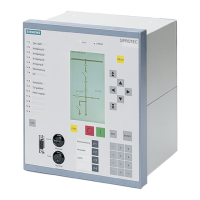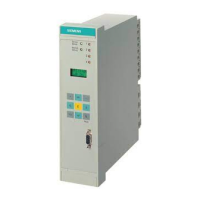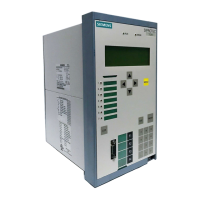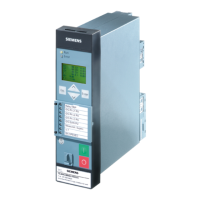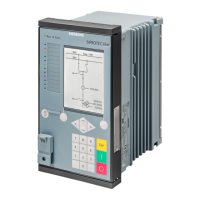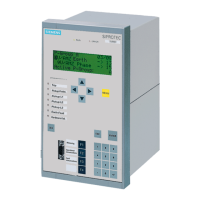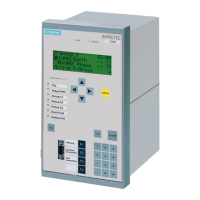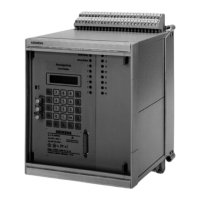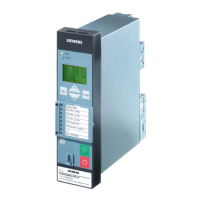Functions
6-317SJ62 Manual
C53000-G1140-C121-1
Figure 6-17 Visualization of a User Specified Characteristic Curve in DIGSI
®
4
If address was set to 8VHU' HILQHG3LFNXS&XUYH or 8VHU'HILQHG
3LFNXSDQG5HVHW&XUYH during configuration of the user-specified curve option,
a maximum of 20 value pairs (current and time) may be entered at address
1 to represent the time-current characteristic curve associated with the 51 element.
This option allows point-by-point entry of any desired curve.
If address was set to 8VHU' HILQHG3LFNXSDQG5HV HW&XUYH during
configuration of the user-specified curve option, additional value pairs (current and re-
set time) may be entered at address 0RI385HV77S to represent the reset
curve associated with the 51 element.
Current and time values are entered as multiples of the address and set-
tings. Therefore, it is recommended that addresses and be initially set to
to simplify the calculation of these ratios. Once the curve is entered, the settings
at addresses and may be modified if necessary.
Upon delivery of the device, all time values are set at ∞, preventing pickup of the de-
vice from initiating a trip signal.
When entering a user-specified curve, the following must be observed:
− Enter the data points in ascending order. The time overcurrent functions will sort the
data points by current values in ascending order. The graphical representation dis-
plays the data points in the order they are entered.
− As few as 10 pairs of numbers may be entered at the user’s option. Each unused
pair must then be marked as unused by entering “∞” as for the time and current val-
ues. It is important to view the curve to ensure that it is clear and constant.
− Current flows which are less than the
smallest
current value entered will not lead to
an extension of the tripping time beyond the time associated with the smallest cur-
rent value entered. The characteristic curve (see Figure 6-18) represents constant
tripping time for currents less than the
smallest
current value entered.
− Current flows which are greater than the
largest
current value entered will not lead
to a reduction of the tripping time below the time associated with the largest current
value entered. The characteristic curve (see Figure 6-18) represents constant trip-
ping time for currents greater than the
largest
current value entered.
www . ElectricalPartManuals . com
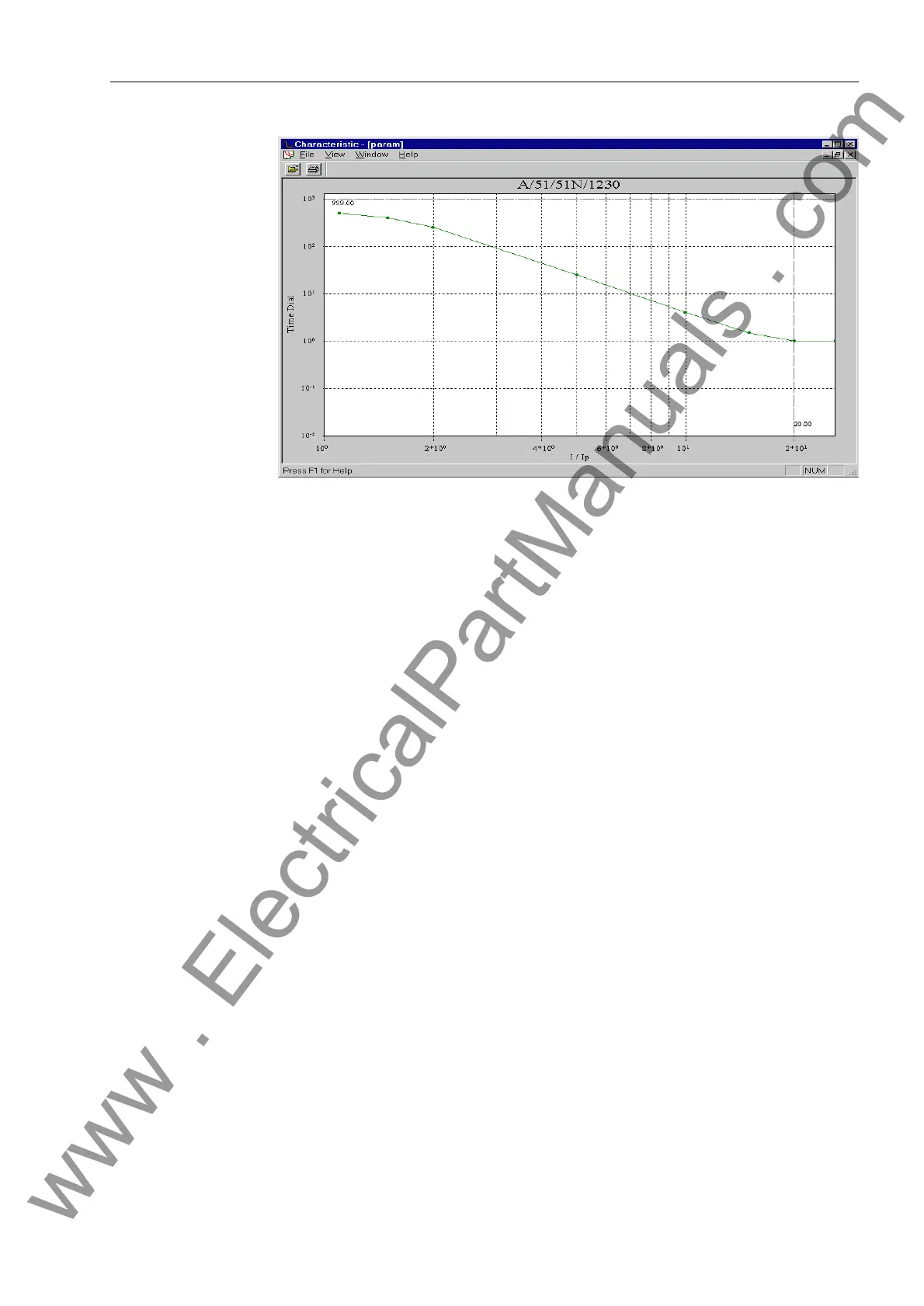